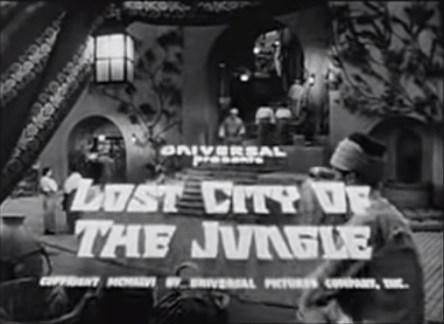
“The warmonger who steals peace is the worst of all thieves.” –United Peace Foundation member

Agent Rod Stanton of the United Peace Foundation should be basking in triumph: thanks to his efforts, the world is rid of Sir Eric Hazarias, one of the most pernicious warmongers ever, Hazarias’ car having driven off a bridge and burst into flame. The Foundation is one step closer to its goals of uniting the world and banishing war forever. However, Stanton cannot be satisfied until he has followed up on rumors that Sir Eric didn’t die at all, but rather one of his doubles, and the warmonger has resurfaced in the Himalayas under the name “Geoffrey London.” Stanton, with the support of the Foundation, flies to the remote nation of Pendrang, even though a consistent headwind makes it nearly impossible for even the best pilot to get into Pendrang with the approach of winter. Add to that the presence of a stowaway, Marjorie Elmore, daughter of the archaeologist whose expedition in Pendrang is being financed by “Geoffrey London.” When the weather brings their plane down in the inhospitable, icy Himalayan mountains, where the threat of deadly cold and avalanches is more immediate than the machinations of Sir Eric Hazarias, nothing could seem farther away than the warmth of the jungle, but that is their ultimate destination: the Lost City of the Jungle, in fact!

Ah, the jungle. Jungle adventures were so popular in the 1930s and ’40s that Africa and South America weren’t big enough to contain them, and new exotic locales had to be found for adventurers to explore. Pacific islands worked for a while, but even those no longer seemed so exotic or scary now that thousands of American G.I.s were returning to the mainland and setting up tiki bars and hosting luau-themed barbecues in the back yard. Particularly after World War II, when the wide-open frontiers of Africa and the Middle East were hardening into closed national borders, and there were fewer blank spots on the map for writers to speculate about, the settings for “lost world” stories and jungle treks moved to less likely but still mysterious places.

So it is that Lost City of the Jungle takes place in the fictional nation of Pendrang, in “an isolated jungle basin in the Himalayas,” making for an odd juxtaposition of ice-covered mountains and sari-wearing natives living among palm trees. Apparently there are some tropical rainforests in the eastern foothills of the Himalayans, but Pendrang, as described, is truly hidden in the center of the range, cut off from the rest of the world by heavy ice that blocks the passes in and out for five months of the year (conveniently trapping good and evil characters alike without escape or outside aid).

Plausibility aside (a disclaimer that should be assumed with most serials), Pendrang is an interesting place and a lively, varied setting for adventures. Although there is a whiff of Shangri-La about Pendrang, there are no lamas or immortals. The capital city of Zalabar is purely worldly, ruled by the casino operator Indra, whose wealth allows her to bend the laws to her liking, and the mystical beliefs of the tribesmen who live in the surrounding jungle turn out to have a surprisingly rational basis. Indeed, the “eternal sun” the natives venerate in the name of the “glowing goddess” is revealed to be a radioactive element, the MacGuffin for which the bad guys are searching. This is the age of science, baby!
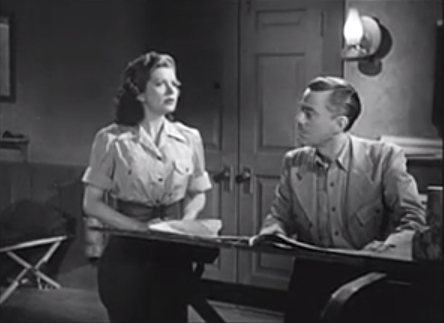
Once Stanton (Russell Hayden) and Marjorie (Jane Adams) make it to Zalabar with the help of local agent Tal Shan (Keye Luke of the Green Hornet serials), they reunite with Dr. Elmore (John Eldredge). Elmore is a man of scholarship, completely unaware of the real goals of his patron, or that his assistant, Professor Grebb (John Gallaudet, whose voice sounds uncannily like Bob Newhart’s), is secretly in league with Hazarias. The main thread of the plot is a classic treasure hunt, with characters finding clues in the forms of tablets, tomb carvings, and plaques covered with hieroglyphics that must be translated to determine the next step. (Of course one or more of these artifacts get stolen and must be recovered, and there are still the natives, for whom these are sacred objects, to worry about.)

The land beneath Pendrang is full of caves and tunnels, and needless to say there are deathtraps to snare the unwary, such as tomb chambers that fill with gas and ledges that hang precariously over pools of bubbling lava, forming some of the serial’s cliffhangers. If those don’t bring our heroes’ adventures to an end, perhaps Hazarias’ henchmen Marlow (George Lynn) and Johnson (Dick Curtis) will. There are always henchmen.

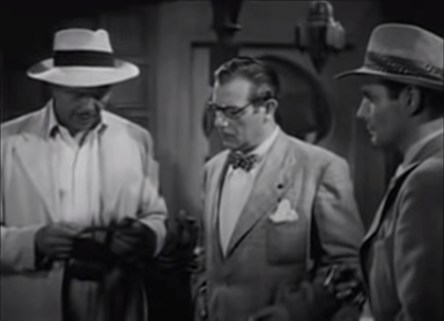
Lost City of the Jungle followed Jungle Queen by a year, and shared the same directors, Lewis D. Collins and Ray Taylor. Like the earlier serial, in addition to the usual action there is an emphasis on spycraft and agents working for global forces, although the apolitical “United Peace Foundation” is a step back from the explicit references to the Allies and Axis in Jungle Queen (the United Nations resolution is mentioned, but the Foundation is a bit more hands-on). Sir Eric Hazarias, who is indeed going by “Geoffrey London” in Pendrang, is first and foremost a capitalist, a non-ideological promoter of war who hopes to profit from conflict around the world. In Pendrang he is looking for “meteorium,” the element critical to his scientist Gaffron’s design for neutralizing the atomic bomb (still a startlingly recent development). Once the element is isolated, this anti-nuke device will be sold to the highest bidder, and the nation who owns it will be free to use atom bombs without fear of reprisal.

Lost City of the Jungle is also similar to Jungle Queen in lacking title cards or narrator for recaps at the beginnings of chapters: instead, each chapter begins with a meeting of the United Peace Foundation back in San Francisco, going over Rod Stanton’s progress in the Pendrang matter. Reminders of important details are also included in dialogue, which makes things flow organically but results in “TV exposition” in which people repeat information they already know to each other. If the relationship between meteorium, the atomic bomb, and the glowing goddess is confusing at first, don’t worry: it gets explained multiple times.
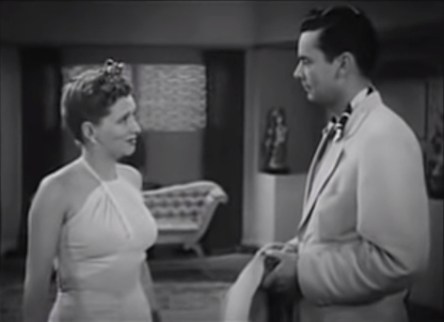
Finally, another similarity to Jungle Queen is the shifting loyalties and hidden motives of many of the characters, making for an atmosphere of suspicion and distrust. If anything, the depth of characterization is greater here than in Jungle Queen (while still relying on many stock character types). I particularly like the circle around Indra (Helen Bennett) at her Star of Asia Casino, a neutral territory at which the de facto ruler of Zalabar can interrogate strangers and make deals in safety, as long as she keeps the police and guards paid off. It reminds me a bit of Rick’s Café in Casablanca, and the most colorful side characters are found here: “Doc” Harris (Ted Hecht), the cool casino manager, and “System” Reeves (Arthur Space), a hapless gambler who’s convinced he’ll crack the roulette wheel any day, but who in the mean time is a useful extra pair of eyes for Harris.
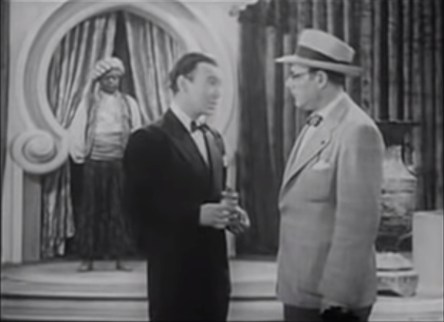
On that note, at least one of those character twists was the result of offscreen events: Sir Eric is played by Lionel Atwill, who had been a major horror star in the 1930s; when not playing out-and-out mad scientists, he portrayed well-spoken, monocle-wearing villains (including Dr. Maldor in the Captain America serial). That Atwill, who had at one time been as big as Lugosi and Karloff, ended his career in “Poverty Row” serials and B movies was the result of an earlier scandal in which Atwill was found guilty of perjuring himself following a police raid on an orgy at his house in 1940. After that, the majors (with the exception of Universal, who continued to find parts for him in the Frankenstein series) effectively blacklisted him. Lost City of the Jungle was, in fact, Atwill’s final film; he died during its production, and in addition to such time-honored tricks as using a double to finish some of his scenes, the producers had the script rewritten, bumping up the importance of another character. Early on in the story, it is revealed that Sir Eric’s personal secretary, Malborn (John Mylong), is actually the power behind the throne, directing events from relative obscurity with Sir Eric as a mere figurehead. Of course, eventually Malborn goes too far and Sir Eric asserts himself. . . . The reconfiguration around Atwill’s death makes sense in retrospect, but not knowing it while I was watching the serial, I suspected nothing. It just felt like a particularly twisty plot.


What I Watched: Lost City of the Jungle (Universal, 1946)
Where I Watched It: TCM has been running this one on Saturday mornings this summer, but it’s also on YouTube, so I watched about half on my DVR and then went ahead and finished watching it online.
No. of Chapters: 13
Best Chapter Title: It’s a toss-up between “Wave-Length for Doom” (Chapter Three) and “Death’s Shining Face” (Chapter Six).

Worst Chapter Title: Actually, most of the chapter titles in this are pretty blah, but the worst is the title of Chapter Seven, “Speedboat Missing.” The extreme passive voice, as if the title were a flyer announcing a search for lost property, goes against all the principles of dynamic phraseology I’ve been hammering on for the last six(!) years. Even adding the definite article to make it “The Missing Speedboat” would at least be neutral, but it’s not even about a missing speedboat: the chapter ends with a high-stakes chase on the water, with Marlow throwing grenades at Rod and Tal Shan.
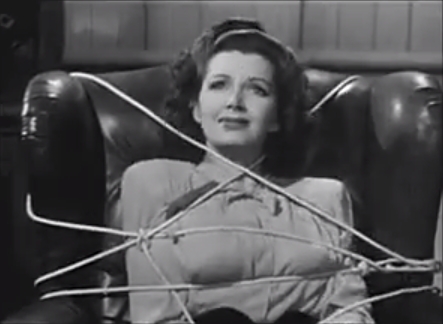
Best Cliffhanger: As in Jungle Queen, the cliffhangers are not always the best parts of the chapters, with some of them seeming like afterthoughts. However, there are a few good deathtraps in the serial style, and the best is at the end of Chapter Nine, “Zalabar Death Watch.” After being lured to the schooner on which Dr. Elmore is being held (the presence of the schooner in landlocked Pendrang, justified as a folly built for river trade that never materialized, is typical of serials’ use of stock locations and situations without much concern for realism), Marjorie is tied to a chair and placed in front of a bookshelf. On the mantel are two bronze elephants, and with the flip of a switch they begin to move towards each other, triggering a gunshot from a mounted rifle when they make contact. The kidnappers’ hope is to make Dr. Elmore talk before that happens, but will Rod and Tal Shan decipher the secret message Marjorie left behind in time to rescue her?
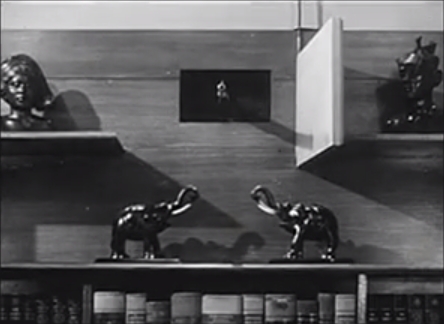
Sample Dialogue:
Gaffron: Now our hands are tied, we can do nothing!
Sir Eric: Our hands are never tied, remember that!
–Chapter Ten, “Booby Trap Rendezvous”
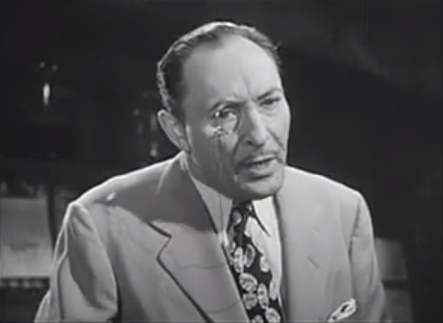
What Others Have Said: “The stocky, suavely sinister [Lionel] Atwill was one of the most menacing character actors of the classic age of horror. The man behind that façade was equally fascinating . . . and some would say almost as sinister.” –“Dr. Abner Mality,” “The Rise and Fall of Lionel Atwill” at Ravenous Monster
What’s Next: It’s back to the big box of VHS tapes; join me next time as I review The Masked Marvel!